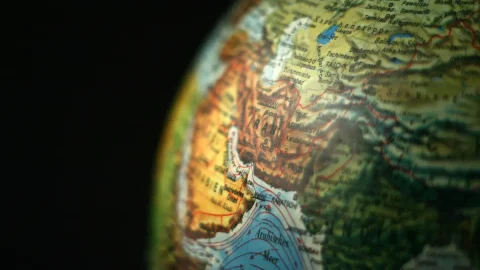La China discovers the demographic crisis after 60 years. Decades of family planning have contributed to a serious gender imbalance in favor of males (which still persists) and put demographic turnover at risk. But since the one-child policy was abolished in 2016, there hasn't been the baby boom Beijing expected and the demographic crisis is sanctioned by the numbers. In 2022, the population of China is 1,41 billions of people (-850 thousand newborns compared to 2021), with 9,56 million births against 10,41 million deaths. Thus it risks being surpassed by India in the primacy of most populous nation in the world (if it hasn't already).
The data released by the National Statistics Office in Beijing is not surprising, after all, for years there has been talk of a decline in the population in China: in 2022 9,56 million births against 12 million newborns in 2020 and 14,6 in 2019. This trend is expected to continue for several decades, with significant consequences for theeconomy, job market and pension system. All problems that we too know very well.
And at this rate, by the end of the century, the Chinese population will be reduced to less than a billion (757 million in the year 2100 according to the most restrictive forecasts), while the world's population will rise from the current 8 billion to 11, with India leading with 1,5 billion people.
China, in 2022 increasingly elderly population
The data concern only the population of Chinese citizenship in the "Continental" area. Therefore, the two special regions of Hong Kong and Macao and also Taiwan are excluded. But why is the population still declining in China? At the basis of this phenomenon we have to consider the rate of improvement in life and theincrease in average age of aging of the population. At the end of 2022, people over 60 were 19,8% of the population, compared to 18,9% the previous year. By 2035 it is estimated that the Chinese over 65 group will exceed 30% of the population, at 400 million.
But why is the population declining in China?
China's demographic crisis has a different origin from that of the rest of the world. In 1979, Beijing imposed the one child policy, increasingly concerned about the "demographic boom" that would have threatened the growth of per capita domestic product. That policy was maintained for almost forty years, with brutal impositions: "Raise more pigs, have fewer babies." And in the end it has led to a serious gender imbalance in favor of males.
Long aware of the decline in fertility and the aging of the population, the Chinese government first abolished the one-child policy, and then launched the two-son or daughter policy and in 2021 prepared measures to stimulate third-born births. Despite the incentives, the aging population trend has not been reversed, creating many difficulties for a country that has always relied on its huge pool of workforce to drive economic growth.
Over time the men they have passed the women (722,06 million against 689,69 million). But behind the demographic decline there are also economic reasons, with the difficulties of raising children (too expensive), especially in cities. Even three years of zero Covid policy have had an impact, even if it is not clear how much more it will affect in the future, after the abandonment of the most restrictive policies to contain infections.
Beijing: +3% GDP in 2022, never so low for over 40 years
The aging of the population and the drop in births, together with the collapse of the real estate sector, the drop in foreign demand and the restrictive anti-Covid policies, have contributed to the slowdown economic of the country: the Chinese GDP è raised by 3% in 2022, failing for the first time the target set by the government (equal to 5,5%). This means that China's domestic product has reached 121 trillion yuan, equal to 17.930 billion dollars. Excluding 2020 - when growth stopped at 2,2% in the first year of the Covid-19 pandemic - this is the Asian giant's worst result since 1976, when the country was still paying all the consequences of the Cultural Revolution.
This is far less than the +8,4% recorded in 2021, but in any case higher than expected. The fourth quarter of the year, on the other hand, recorded zero expansion of the economy on a cyclical basis (-0,8% expected, +3,9% the previous quarter), while the tendential increase was 2,9 %, but above the market consensus of 1,8% (+3,9% the previous quarter).
But what are the forecast for 2023? According to experts, the Chinese GDP could register a greater increase, equal to 4,8%. The National Statistics Office said that the foundations for the recovery "are not yet solid", highlighting an international context that remains "complex and severe".





